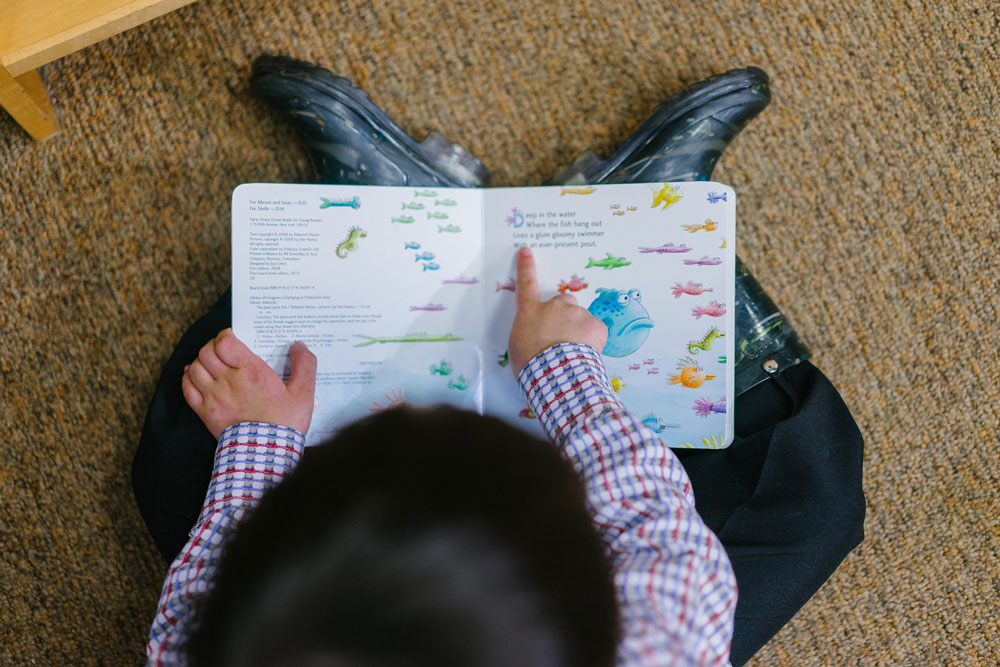
Reading books is possibly the best gift parents and caregivers can provide for their kids. Reading develops the child’s communication and cognitive skills. At the same time, picking up words encourages their imagination to create an understanding of the world around them. The ability to read terms, process language by connecting it to pictures, and later relating the stories--together, it builds a valuable framework for communication skills.
That’s possibly one reason why speech pathologists include reading as an essential part of speech therapy for kids. If you’ve been wondering what parents can do to help their kids, here are a few practical tips to get you started in the right direction.
-
Spark a Love of Books Early
No age is too young for books. Sitting down with a washable cloth or laminated book with lots of colorful pictures is a great way to get your babies interested in them. Whether it is bedtime or naptime, or any other time when the child is fussy, see if you can cuddle up with a book. More than the actual reading, kids enjoy the soothing sounds of their parents’ voices and the warmth of loving contact. Reading books should be an activity kids look forward to with the anticipation of getting your undivided attention. Listening helps them learn to pick up tones and modulations, while singing and rhyming words push kids to imitate the sounds.
-
Teach by Demonstrating
Kids learn best by emulating grown-ups, and any activity that parents do is worth imitating in their minds. If you wish to get the kids excited about books, join in by reading yourself. Build a book area and fill your home with fun books of all kinds. Make trips to the library and infuse enthusiasm about the activity, new titles, and stories.
Talk about what’s in the book they’re reading; discuss the information, the characters, their names, and the things they do. Bring them to life, so the kids want to learn more.
-
Encourage them to Play Games Around the Stories
Show your kids how to make their books come alive with games based on the stories they read. When you see kids enacting out the tales, you’ll know that they are starting to understand concepts and pick up their correct names and usage. For instance, what is a princess, king, castle, horse, sword, dog, road, crown, magic, and dragon?
-
Why Reading Aloud is Important
Reading aloud and pointing to each word as you go along helps kids pick up the proper pronunciation. You’ll notice that when you speak, the little tot watches your mouth forming words and facial expressions carefully. You would also want to gesture and use hand motions to describe terms. Kids also like to touch their parents’ faces when they speak or read. That’s their way of trying to learn how to make sounds and connect them into coherent words.
When sitting down with a book, they’ll try to use the same actions to comprehend what is being said. Reading a particular book over and over again indicates the child’s enjoyment with the familiarity they’re developing. That’s a clear win because it’s what you’re aiming for.
-
Get Them Merchandise
Toys are easily the best way to fire up their imagination and connect with the books they read. You’ll pick up brightly-colored blocks with pictures, letters, and numbers. If they have a favorite book, encourage their interest with a custom custom kids t-shirt. The novelty of creating their own design featuring a book title or phrase is a great way to build familiarity with names and stories.
-
Reading and Writing
As your kids grow older, you’ll want to get them started on developing writing skills. Get them books where they can learn to write by tracing letters. You could start by practicing straight lines, vertical and horizontal, and then move on to slanting lines to form letters like A, E, F, H, and so on. Once the child gets the hang of it, you could try curving letters like B, C, D, G, and so on. Over time, you could move on to lowercase letters and cursive writing.
The practice books have dotted letters that kids can trace. Writing words and reading them is a highly essential part of effective speech therapy for many children. Kids who can write can express themselves more readily and it provides a helpful way to refine thoughts. By the age of seven and eight years, you might just have them writing short two- or three-sentence stories for you. With your encouragement, interest, and enthusiasm, they’ll read more and create new vision by infusing moments from their day into their imaginative play.
-
Tapping into the Potential of Bilingual Families
If you have a multilingual family, there are distinct advantages. You can introduce books in both of the languages spoken at home. Kids who grow up in households where more than one language is spoken are known to develop speech strong cognitive and communication skills. That’s because exposure to more than one language challenges and stimulates brain cells to build more complex synapses or connections for more efficient reading. It’s a win-win all the way.
Reading is a valuable skill that does wonders for your kid’s communication abilities and helps them when they enter school for formal education. Use these ideas so that they discover the world of books.



























